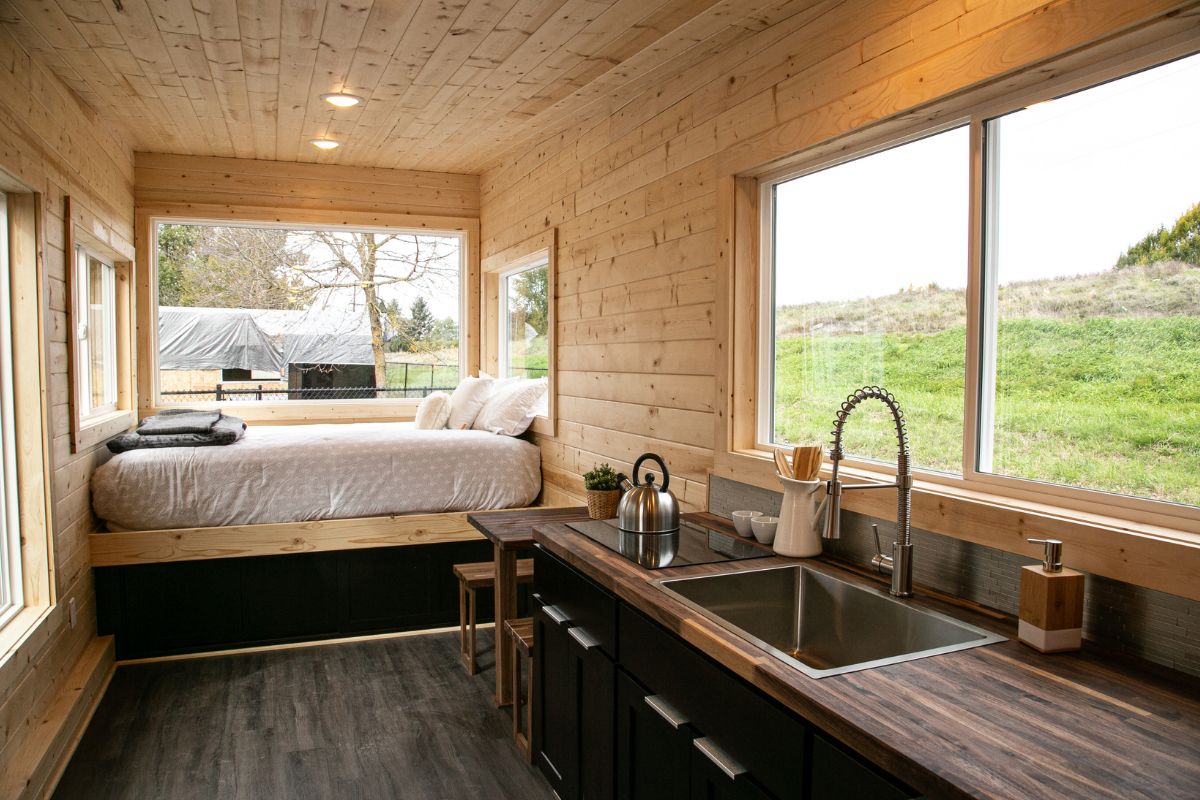When buying a bed, the biggest factor other than quality is ensuring you select the appropriate bed size which fits your bedroom.
If you want to understand how to measure your bed space properly, and avoid bedroom layout issues, read on. Whether you’re moving home or re-designing a bedroom, this article is for you.
Bed Sizes and Dimensions
Before you get into measuring your space and deciding bed size, it’s best you familiarize yourself with the standard dimensions of various bed sizes. Different mattresses like King, Double, and Twin all have a standard size, but your bed may be much bigger when in situ.
Check with the manufacturer and make sure you use the full size of the bed rather than just the mattress, however, the mattress size will give you a good indication of what you’re working with.
Single Bed
A single bed is perfect if the room it's going to be in is for children, teenagers, or single adults with limited bedroom space. They usually are around 90 cm wide and 190 cm long in size.
Double Bed
Now, if you're a couple or enjoy more wiggle room to toss around at night, a double bed is the preferred choice. It is quite often placed in smaller master bedrooms or larger guest rooms as it measures 135 cm wide and 190 cm long.
Small Double Bed
The small double bed or the "three-quarter" bed is the middle ground between a single and a double bed. It is 120 cm wide and 190 cm long and will serve as a single sleeper but can also be used by couples.
King-Size Bed
If you enjoy loads of space when sleeping then the king-size bed is for you. Typically it is 150 cm wide and 200 cm long, and offers much extra width and length, so even couples can get personal space while sleeping.

Step-by-Step Guide to Measuring Your Bed Space
Take the Room's Length and Width
You can find beds of all sizes at companies like Nest Bedding, so once you know a general size you can start to measure your floor space. With a measuring tape, measure the overall length and width of your bedroom. Note down these measurements since they will be used to decide the largest bed size that can fit your room.
Measure Ceiling Height
If a lofted or bunk bed is a possibility for you, measure from the floor to the ceiling so there is sufficient clearance.
Mark and Measure Important Obstacles
Note where fixed structures such as closets, doors, windows, and built-in furniture exist. Measure the extent to which doors open to prevent blocking when setting up your bed.
Plan Walkways and Clearance Space
Offer at least 24–30 inches of clearance space in order to be able to walk around the bed and move. Also, account for nightstands, dressers, or other pieces of furniture if possible.
Mark the Potential Bed Area
Mark the bed size dimensions with masking or painter's tape on the floor. This visual guide gives you an idea of how much space will be occupied by the bed.
Double-Check Your Measurements
Before finalizing your bed choice, go over your measurements again to confirm accuracy. Small miscalculations can lead to fitting issues.
Ensuring the Perfect Fit for Your Bed
Accurate measurement of your bed space is one of the critical steps toward a comfortable and useful bedroom. By using the right measurement techniques, considering clearance space and where to place the furniture, you can easily place your bed in your room without it looking cramped.
Why Choosing the Right Bed Size Matters
Selecting the right bed size is crucial for both comfort and functionality. A bed that's too large can overwhelm a small bedroom, leaving little room for essential furniture or walkways. On the other hand, a bed that's too small may not provide the comfort needed for a restful night’s sleep, especially for couples or those who move around a lot. The right bed size ensures a balanced bedroom layout, allowing for smooth movement and a visually appealing space. Additionally, your bed choice should complement the room’s design while considering factors like storage needs and potential future use.

Comparing Bed Sizes: Which One Is Right for You?
Understanding how different bed sizes fit into various spaces can help you make an informed decision. A single bed is ideal for children, teenagers, or single adults in small rooms. A small double bed is great for solo sleepers who want more room but don’t have space for a full double. A double bed offers more comfort and suits couples in compact master bedrooms. A king-size bed, with its extra width and length, is perfect for those who prioritize spacious sleeping areas. Assess your sleeping habits, the room’s purpose, and space availability before choosing the right size.
Bed Frame Considerations: More Than Just the Mattress
Many people focus solely on mattress size, but the bed frame significantly affects how much space a bed occupies. Some frames extend beyond mattress dimensions due to built-in headboards, footboards, or side storage. Platform beds provide a sleek, space-saving option, while storage beds offer built-in drawers to optimize space in smaller rooms.
Canopy and sleigh beds can make a bold design statement but require more space. When measuring your room, always account for the bed frame's total footprint. Ensuring the bed frame aligns with your layout helps prevent overcrowding and creates a well-proportioned, aesthetically pleasing space.

Common Mistakes to Avoid When Choosing a Bed Size
One of the biggest mistakes when choosing a bed size is failing to measure properly. Many people underestimate how much space a bed frame takes up or forget to leave enough clearance for movement.
Another common issue is ignoring existing furniture—nightstands, dressers, and wardrobes must fit comfortably alongside the bed. Additionally, some buyers prioritize aesthetics over practicality, choosing oversized statement beds that make the room feel cramped.
How to Maximize Space in a Small Bedroom
If your bedroom is on the smaller side, there are several strategies to maximize space. Opting for a storage bed allows you to utilize under-bed drawers for linens or clothing, reducing the need for extra furniture. Keeping furniture minimal, using multifunctional pieces, and choosing a neutral color scheme can also make a small room feel more open and airy. Smart planning makes even the tiniest bedrooms functional and stylish.





Share: